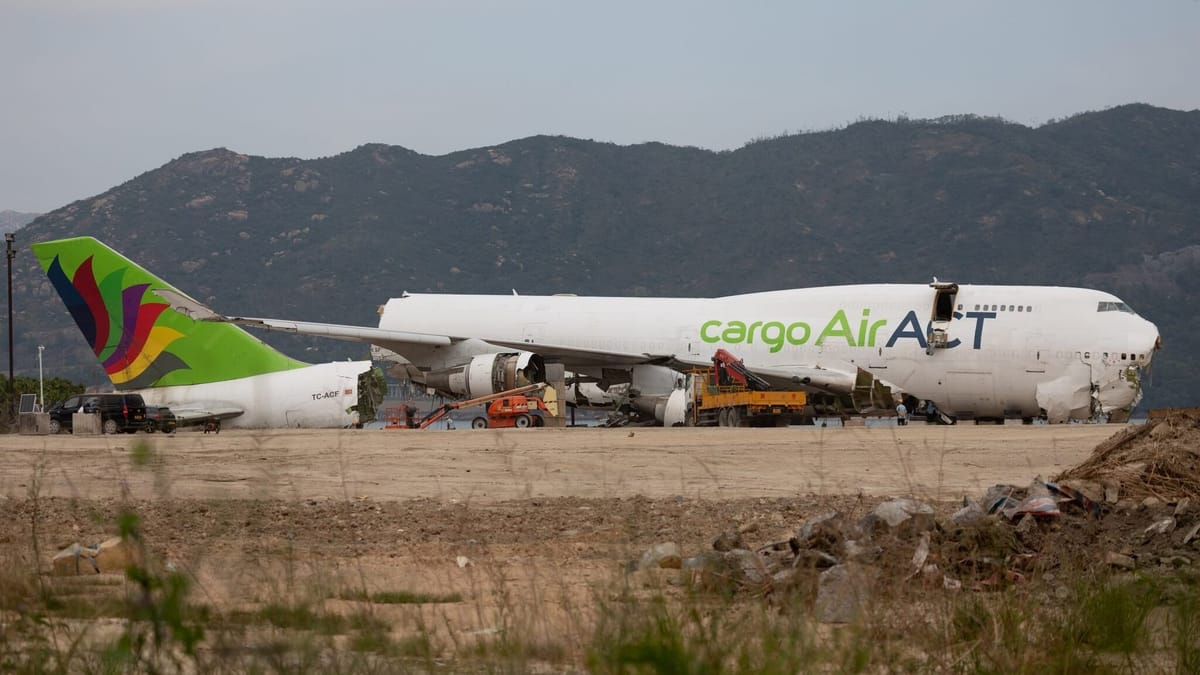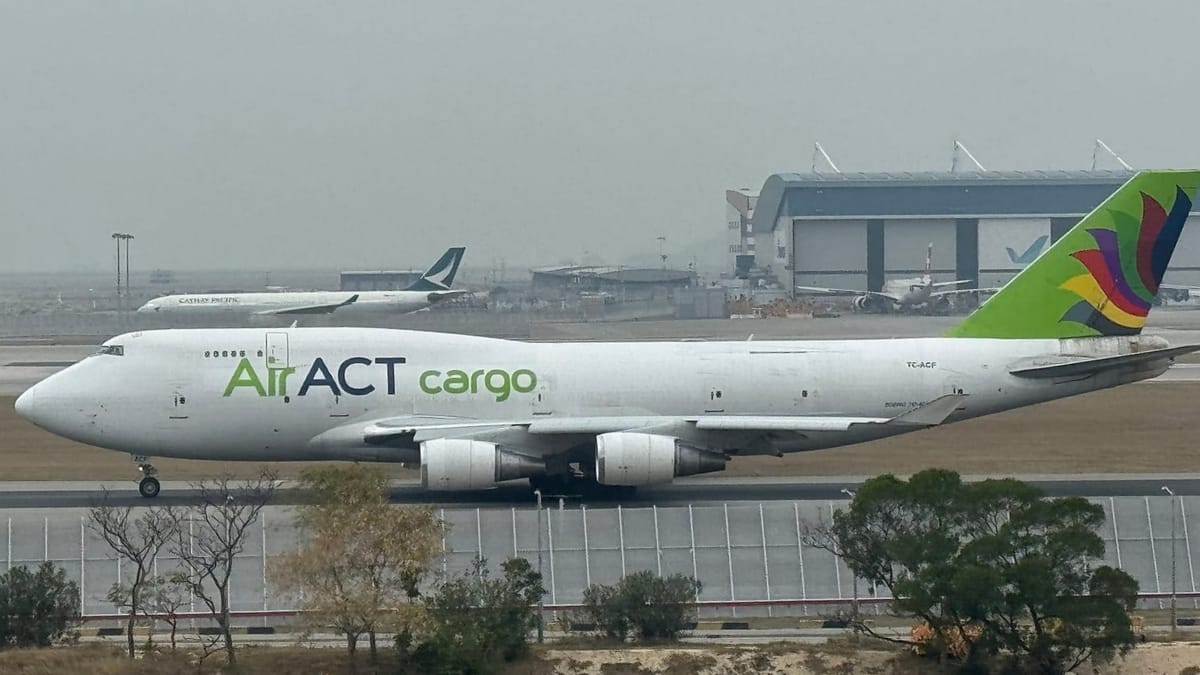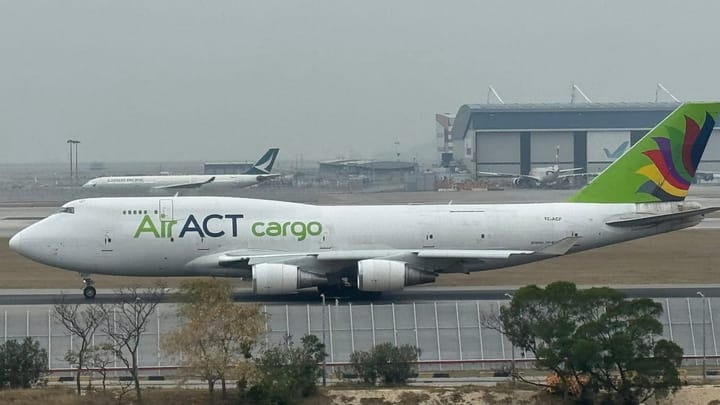ACT Air B747’s engine accelerated, thrust reversers stowed before runway excursion at HKG
Hong Kong's AAIA said that the next phase of the investigation will focus on the aircraft and the flight crew.

The Hong Kong Air Accident Investigation Authority (AAIA) has issued its preliminary report about the ACT Airlines Boeing 747-400F incident that claimed the lives of two ground workers.
On November 18, 2025, the Hong Kong AAIA issued its preliminary report about the ACT Airlines 747-400F, registered as TC-ACF, runway excursion at Hong Kong International Airport (HKG) on October 20. The converted freighter, after it had landed at the airport, slid off the runway and crashed into the sea near HKG.
The incident resulted in fatal injuries to two ground workers and damage to HKG’s “various airport meteorological sensor arrays, signage, the ground vehicle, and a section of the perimeter fence.” The aircraft itself was destroyed, with the tail section separating from the 747-400F during the impact sequence, the AAIA said.
“At the time of the accident, the weather conditions were suitable for aircraft operation,” and all “relevant communications, navigation and surveillance, and air traffic control equipment/facilities were serviceable and operating normally,” the investigators continued.

So far, the AAIA has inspected the accident site, retrieved data from the aircraft, including the 747-400F’s flight data (FDR) and cockpit voice recorder (CVR), interviewed the flight crew, all of whom survived, and gathered other information at the airport, which it has investigated since.
AAIA’s preliminary analysis showed that the 747-400F had two minimum equipment list items, namely the Hydraulic System 1 Reservoir cockpit indication, which was resolved by maintenance staff before the aircraft’s first flight of the day, and the inoperative thrust reversers of the number four engine.
“After departure, the evidence available is consistent with a normal flight up to the runway excursion.”
Following the aircraft touching down at the airport, the pilots extended the Speed Brake lever and selected around 95% N1 of reverse thrust on the number two and number 3 engines. The number one engine was moved to ‘idle reverse,’ with the crew affirming that reverse thrust operated normally.
However, an ‘AUTOBRAKES’ message appeared in the Engine-indicating and crew-alerting system (EICAS), after which the captain took control of the aircraft. AAIA pointed out that the crew called out ‘Manual Braking’ at that moment.
Subsequently, the number four engine, which had inoperative thrust reversers, accelerated to 90% N1 of forward thrust, and all selected thrust reversers “were stowed” just five seconds later. The number four engine’s thrust climbed to 107% N1 seven seconds later.
A second before, one of the pilots selected 92% N1 reverse thrust on the number two engine, followed by reversing the thrust on the number one and number three engines, which reached a peak reverse thrust of 83% N1 and 91% N1, respectively.
“Those thrust reverser selections occurred after the aircraft had veered off the runway.”
A post-incident examination of the cockpit indicated that the number one, two, and three “engine thrust levers were closed with reverse thrust levers selected to maximum,” while the number four engine’s thrust lever “was in the full forward thrust position.”
During the next stage of the investigation, the AAIA said that it will collect further data and look into six issues, including technical problems related to the aircraft’s systems, engineering issues and maintenance records of the aircraft’s systems, operational issues potentially related to the flight crew’s qualifications or experience and their handling of the aircraft during variuous flight phases, human factor problems, safety management system (SMS) issues, and “other issues identified during the course of the investigation.”
“Results of the above analysis will enable the investigation team to determine the circumstances, causes, and contributing factors of this accident. It will also facilitate the identification of issues that need further investigation.”




Comments ()